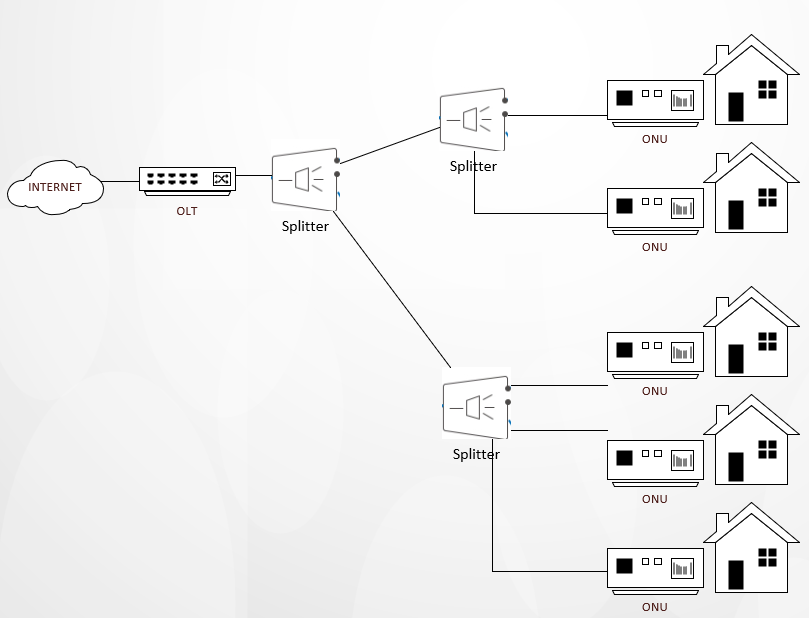The average home internet user probably doesn’t care to know the details of how their fiber internet works. Perhaps it would give them a little more empathy when there’s something askew with their service. At any rate, these blog posts are a digital journal, and ” our ramblings” of our journey along the way.
We touch briefly on what fiber internet is in a previous post. Today we are going to break down different technology components that make the lightning fast speeds possible, as we are using them in our build.
We are building a PON based fiber network. PON stands for Passive Optical Network. We are using a single strand of fiber and splitting it along it’s route to connect to multiple homes. G-PON allows for up to 2.488 Gbps download and 1.244 Gbps upload capacity, on a single strand of fiber. There’s also newer technology called XGS-PON that allows for higher speeds (think 10Gbps). For now, we are using G-PON, which is still 10x faster than any internet service previously available in the circle.
There’s three major components to G-PON :: the OLT (Optical Line Terminal), Splitters, and ONU (Optical Network Unit). We will briefly touch on each of those below. There’s so much more to each of these, but the basic idea is explained.

Optical Line Terminal (OLT)
The OLT is typically in an air controlled space or cabinet. It takes the upstream internet connection and converts that to light that’s sent over the fiber network. Remember we discussed in a previous post about how fast light is traveling over the fiber. So because it’s so fast, the OLT can communicate with up to 128 ONUs (homes/customers) by way of splitters, per port on the OLT. Our OLT’s have 8 ports each, so we can support way more ONUs (homes/customers) than are in the circle, thus providing consistent speeds that you want!
Splitters
Splitters will take the light traveling down the fiber and split the light signal. It can be split once, twice, up to 128 times in total. Each time it’s split, and depending on how many times it’s split, the light signal is weakened. This is where careful planning must be done, as the light signal has to be strong enough to carry the data (your internet) from the OLT to the ONU and back.
Optical Network Unit (ONU)
The ONU is typically a device that is at each home or business that converts that light signal back into something that the typical consumer can use, namely Ethernet. From there it can be connected to your home router and/or shared wirelessly with your devices.
So there you have it – those are some of the core components of what will make up our network. Obviously there’s a lot more that goes into it. Perhaps as we complete our build, we will post some pictures of these different components and where they play a role in the network.
